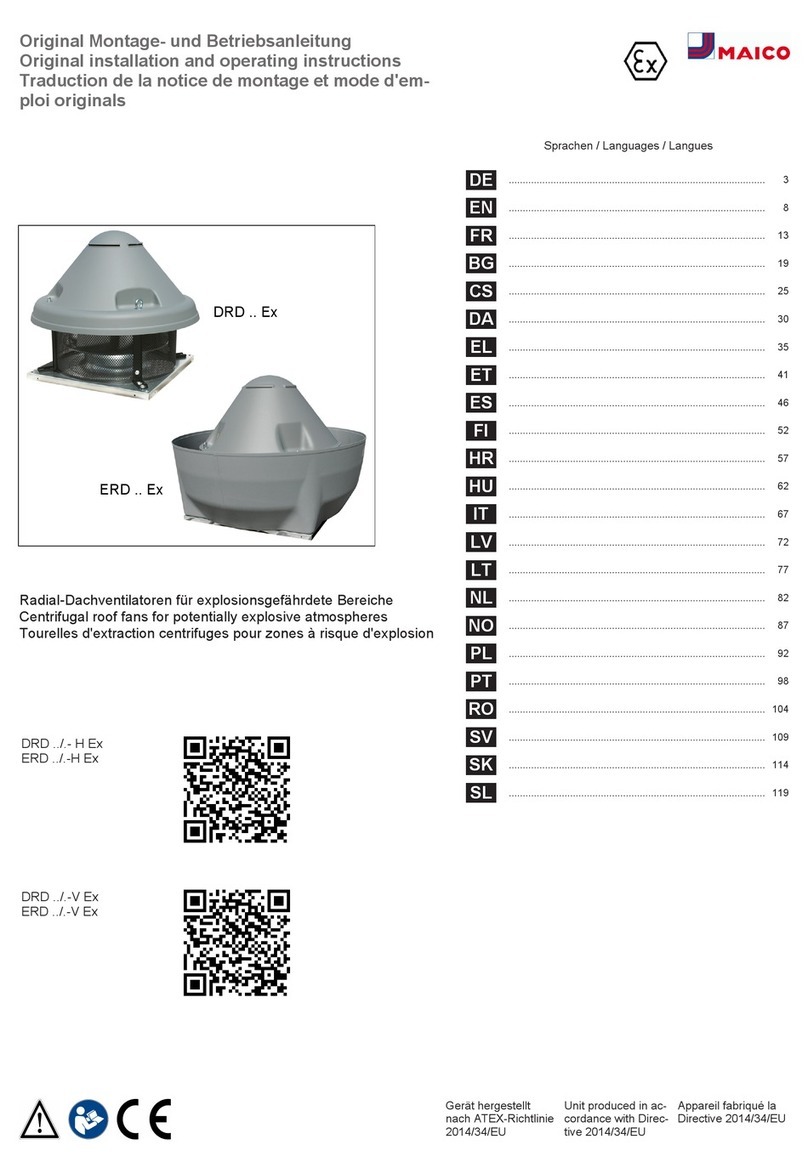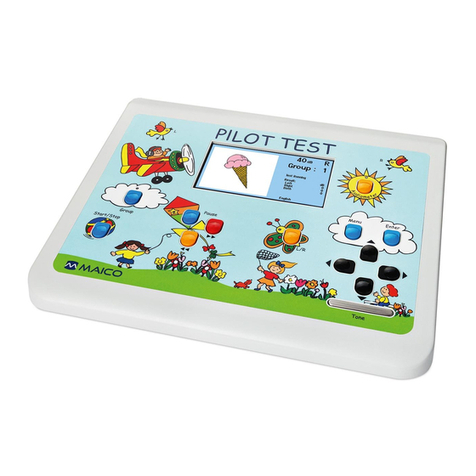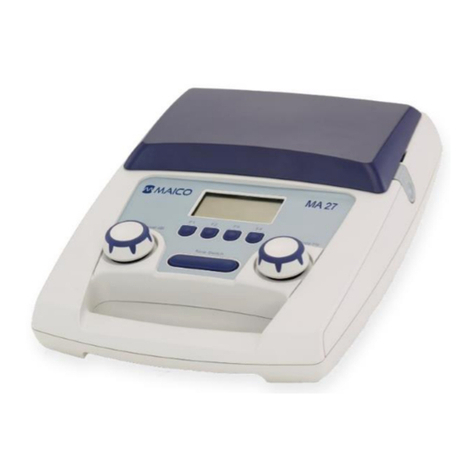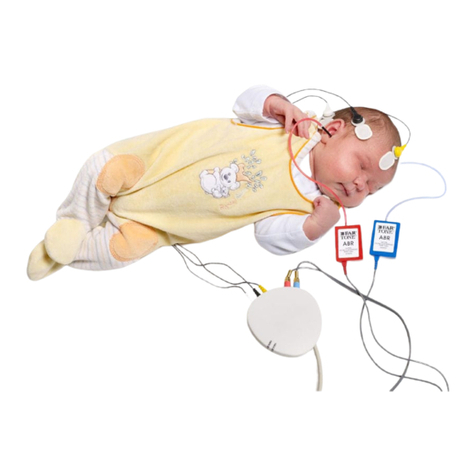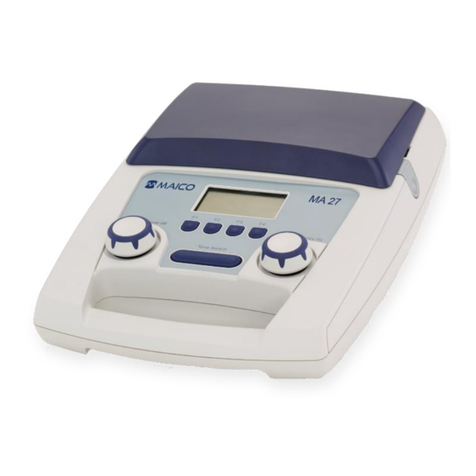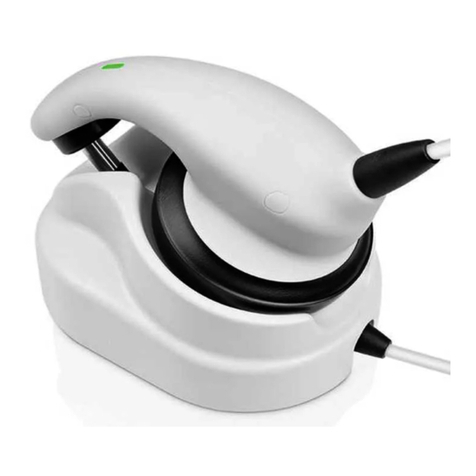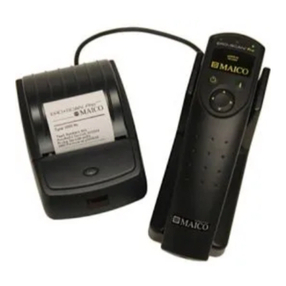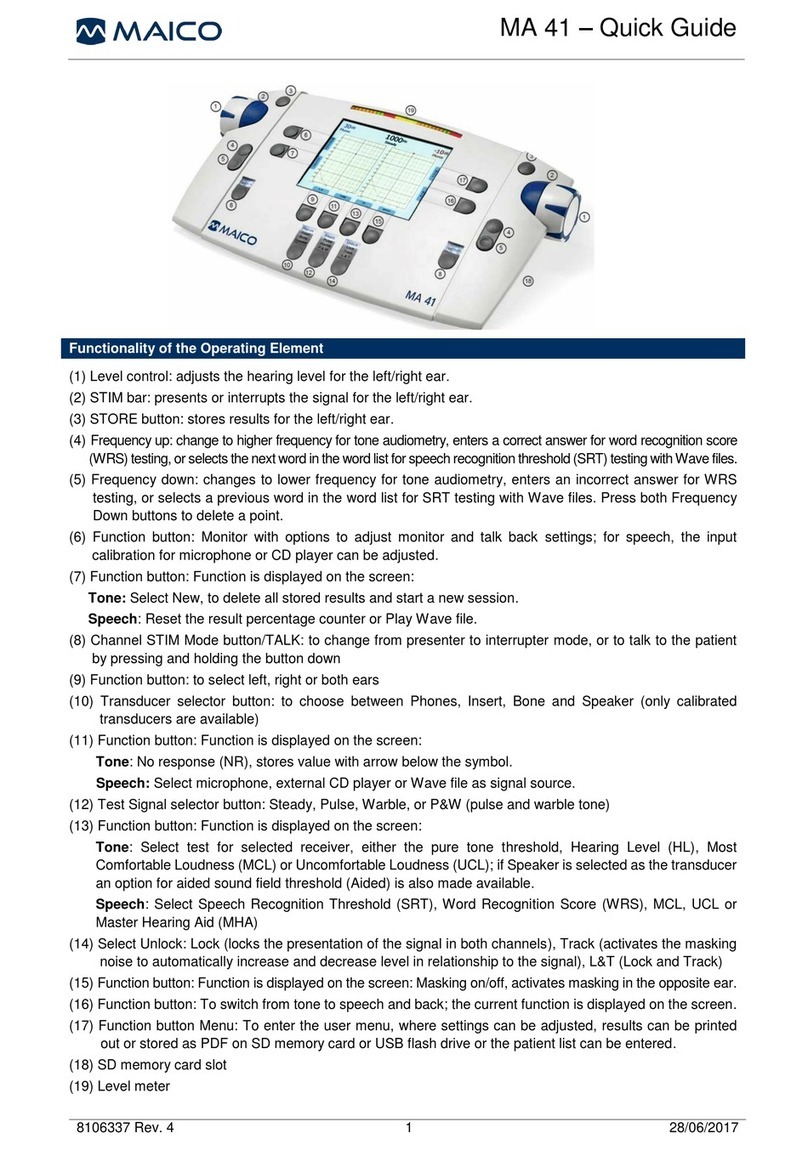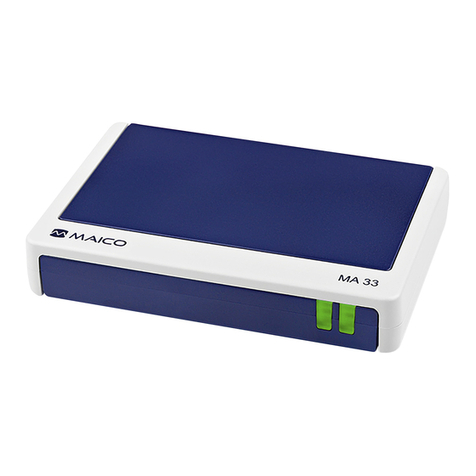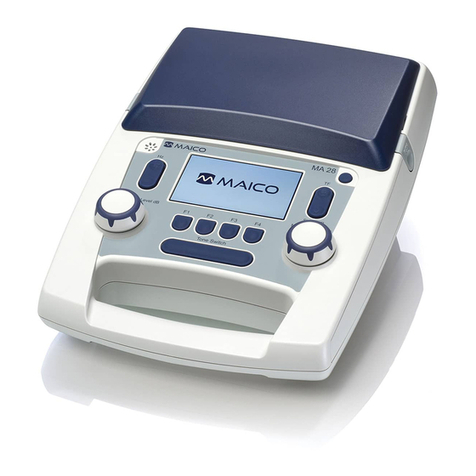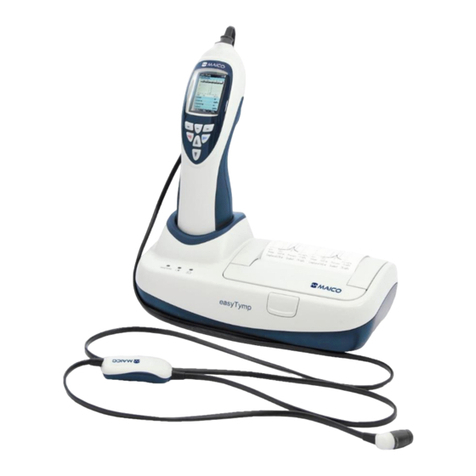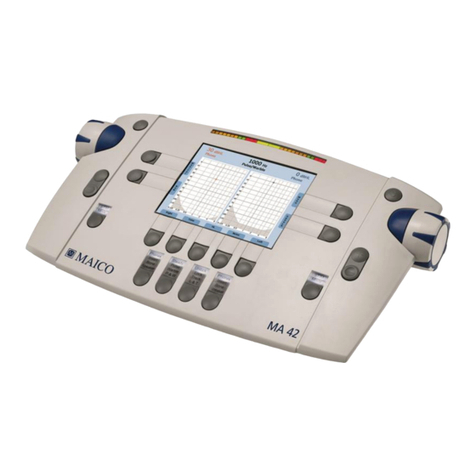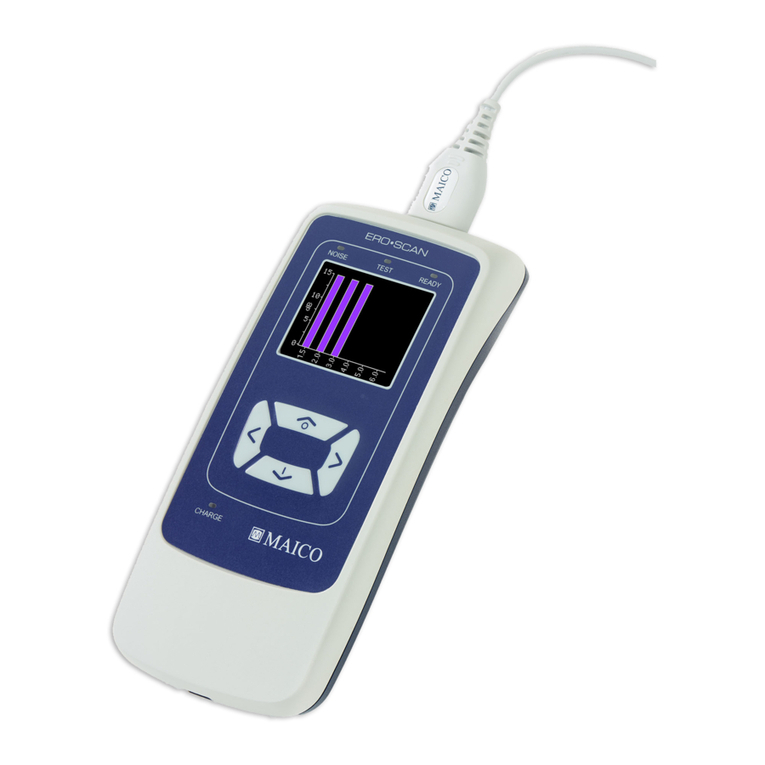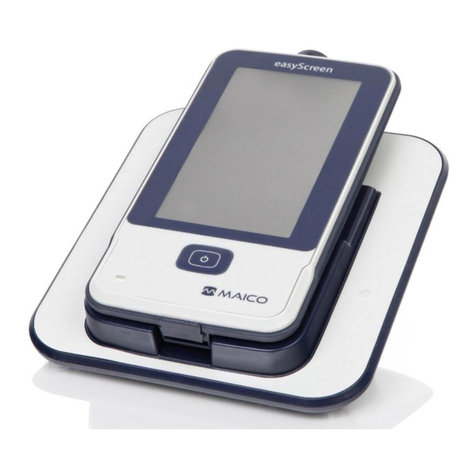
Operating Instructions MA 50
Geba_MA50_Fe_11a.doc 6 851 406/2 11/11
3.2 Preparing the MA 50 for use
The MA 50 with its integrated compartment for
the accessories is perfect for portable use. The
rugged housing, light weight and the
comfortable handle make it easy and convenient
to transport the instrument. Carry it, as shown,
with the bottom away from the leg. That helps
protect the front cover from damage, and due
to the asymmetrical handle position it provides
more space for your leg.
To get started first move the handle under the
housing. Unlatch the cover by pressing in the
two black locks located on the left and right
sides near the front of the instrument. Open the
front cover and rest it on the back cover of the
accessory compartment. To open the
compartment, press the two black locks in the
upper middle of the instrument. Open the
compartment cover as seen in picture 2. Take the
headphone, the bone conduction receiver, the
patient response switch and the microphone out
of the compartment and connect the power
cable to power. The MA 50 operates with
voltages from 96 to 240 V~ AC, 44 Hz to 440
Hz. To avoid pinching the cables when closing
the cover, lay the cables in the slots provided.
Close the back cover and latch it with slight
pressure.
The MA 50 should be operated in a quiet room,
so that the audiometric examinations are not
influenced by outside noises. For use in noisier
environments headphones with optional sound
insulation muffs are available.
Picture 3 MA 50 in operation Electro medical
instruments, which emit strong electromagnetic
fields (e.g. microwaves - radiotherapy devices),
can influence the function of the audiometer.
Therefore the use of these instruments is not
allowed in close proximity to the audiometer.
The test room must be at normal temperature,
usually 15 C / 59 F to 35 C / 95 F, and the instrument should be switched on
about 10 minutes before the first measurement to guarantee precise
measuring results. If the device has been cooled down (e.g. during transport),
please wait until it has warmed up to room temperature.
Picture 1 Transport of MA 50
Picture 2 Portable with open cover
Picture 3 MA 50 in operation
